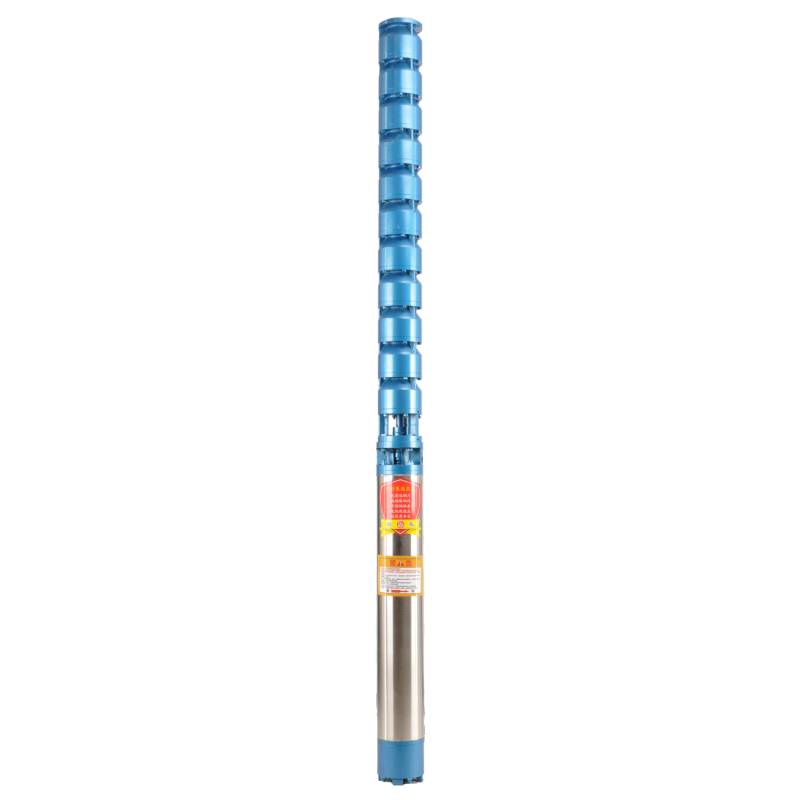Aug . 09, 2024 05:45 Back to list
Exploring the Benefits and Functionality of Submerged Well Pumps for Efficient Water Extraction
Submerged Well Pumps An Essential Tool for Water Extraction
Submerged well pumps are an integral component in the field of water extraction, providing an efficient and reliable method for drawing water from deep underground sources. These pumps are designed to operate while fully submerged in water, making them particularly effective for applications where the water level fluctuates or is located at considerable depths. This article will explore the functionality, advantages, applications, and maintenance aspects of submerged well pumps.
How Submerged Well Pumps Work
A submerged well pump typically consists of a motor and pump assembly that is installed deep inside a well. Unlike above-ground pumps that draw water up through suction, submerged well pumps push water to the surface. The pump’s motor is sealed and cooled by the water surrounding it, ensuring that it operates efficiently even under high pressures. When activated, the pump creates a negative pressure that allows water to be drawn into the pump’s intake. This water is then forced up through a discharge pipe, delivering it to the surface.
The design of submerged well pumps varies, but most commonly, they are made from corrosion-resistant materials such as stainless steel or thermoplastics to withstand harsh environments. Additionally, these pumps can be fitted with submersible cables that power the motor while submerged, further enhancing their functionality.
Advantages of Submerged Well Pumps
One of the primary advantages of submerged well pumps is their efficiency. Since they are located at the source of the water, they minimize the losses associated with suctioning water from a distance. This can lead to lower energy costs and a more consistent flow rate. Furthermore, submerged pumps are typically quieter than above-ground alternatives, as their operation takes place below the water surface.
Another significant benefit is their ability to handle varying water levels. These pumps can operate effectively over a range of depths, making them suitable for areas with fluctuating water tables. Additionally, their design often allows for easier installation and fewer maintenance requirements compared to above-ground pumps.
submerged well pump

Submerged well pumps are also less susceptible to environmental elements, such as extreme weather, which can affect above-ground systems. This can increase their lifespan and reliability, making them a preferred choice for agricultural, residential, and municipal applications.
Applications of Submerged Well Pumps
Submerged well pumps are versatile and can be utilized in various settings. In agricultural operations, they are commonly used for irrigation purposes, ensuring a steady supply of water to crops. In residential settings, these pumps provide water for households, often sourcing from private wells.
Municipal water supply systems also rely on submerged well pumps to deliver water to communities. Additionally, these pumps are suitable for dewatering applications in construction and mining, where groundwater management is crucial to maintaining safe and effective working conditions.
Maintenance and Care
To ensure optimal performance, regular maintenance of submerged well pumps is essential. This includes periodic inspections for wear and tear, checking electrical connections, and ensuring that the discharge pipe is clear of obstructions. It is also vital to monitor the water quality, as sediment and other contaminants can affect pump efficiency.
In conclusion, submerged well pumps play a pivotal role in water extraction, offering efficiency and reliability for various applications. Their ability to work effectively in challenging conditions, combined with ease of maintenance, makes them a valuable asset in both residential and commercial water management systems. As technology advances, the development of more energy-efficient and durable submerged well pumps will likely continue, meeting the growing demands for water resources in a sustainable manner.
-
Submersible Water Pump: The Efficient 'Power Pioneer' of the Underwater World
NewsJul.01,2025
-
Submersible Pond Pump: The Hidden Guardian of Water Landscape Ecology
NewsJul.01,2025
-
Stainless Well Pump: A Reliable and Durable Pumping Main Force
NewsJul.01,2025
-
Stainless Steel Submersible Pump: An Efficient and Versatile Tool for Underwater Operations
NewsJul.01,2025
-
Deep Well Submersible Pump: An Efficient 'Sucker' of Groundwater Sources
NewsJul.01,2025
-
Deep Water Well Pump: An Efficient 'Sucker' of Groundwater Sources
NewsJul.01,2025
-
 Submersible Water Pump: The Efficient 'Power Pioneer' of the Underwater WorldIn the field of hydraulic equipment, the Submersible Water Pump has become the core equipment for underwater operations and water resource transportation due to its unique design and excellent performance.Detail
Submersible Water Pump: The Efficient 'Power Pioneer' of the Underwater WorldIn the field of hydraulic equipment, the Submersible Water Pump has become the core equipment for underwater operations and water resource transportation due to its unique design and excellent performance.Detail -
 Submersible Pond Pump: The Hidden Guardian of Water Landscape EcologyIn courtyard landscapes, ecological ponds, and even small-scale water conservancy projects, there is a silent yet indispensable equipment - the Submersible Pond Pump.Detail
Submersible Pond Pump: The Hidden Guardian of Water Landscape EcologyIn courtyard landscapes, ecological ponds, and even small-scale water conservancy projects, there is a silent yet indispensable equipment - the Submersible Pond Pump.Detail -
 Stainless Well Pump: A Reliable and Durable Pumping Main ForceIn the field of water resource transportation, Stainless Well Pump has become the core equipment for various pumping scenarios with its excellent performance and reliable quality.Detail
Stainless Well Pump: A Reliable and Durable Pumping Main ForceIn the field of water resource transportation, Stainless Well Pump has become the core equipment for various pumping scenarios with its excellent performance and reliable quality.Detail
